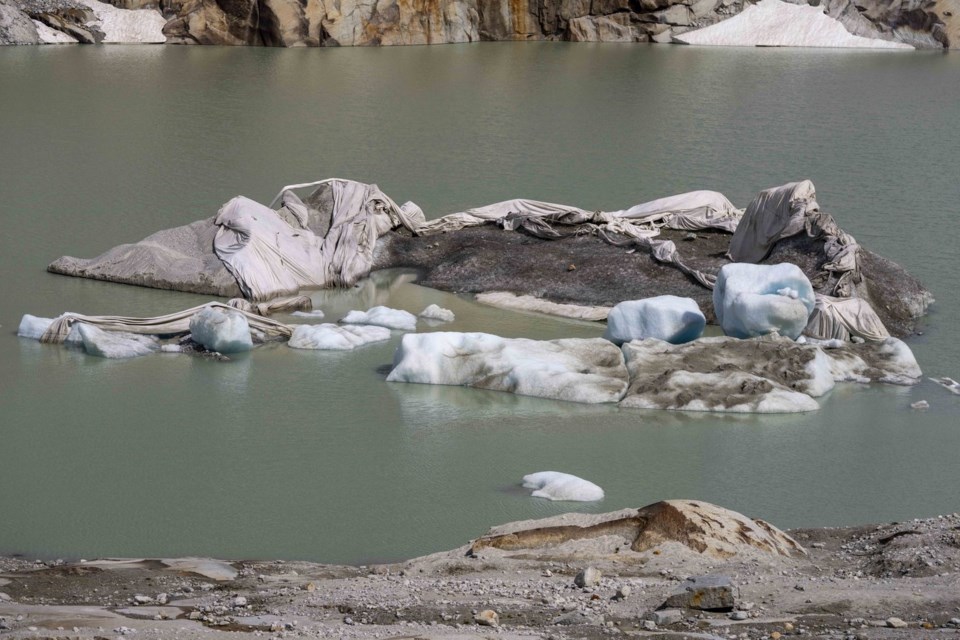GENEVA (AP) — The volume of Switzerland's glaciers shrank again this summer, compounding the negative impact of climate change after a devastating two-year run that , scientific experts reported Tuesday.
The cryosphere observation team at the Swiss Academy of Sciences reported that high temperatures in July and August, combined with the heat-absorbing impact of reddish-yellow dust blown northward from the Sahara Desert onto Swiss glaciers, led to a loss of 2.5% of their volume this year.
The shrinkage came despite “extremely favorable” conditions through June, the academy said, thanks to 30% more snowfall in the preceding winter compared to average levels, meaning that the glaciers had an extra layer of protective covering of snow — before temperatures rose.
“August saw the greatest loss of ice recorded since measurements began,” the academy said in a statement summarizing the findings.
“The retreat of the glacier tongues and their disintegration continue unabated as a result of climate change,” it said, adding that the 2.5% loss of volume was higher than the average levels over the last decade.
Experts at the network, known as GLAMOS, said that more than half of the glaciers it monitored completely lost their snow coverage throughout the summer.
Several topmost measurement points on glaciers, such as Plaine Morte and Gries in the south and Silvretta in the east, recorded melt rates of a meter or more, the network said in a report for the Swiss Academy of Sciences.
GLAMOS cited three factors: “very high” average air temperatures in July and August; good weather in those months in which there was no fresh snow; and southwesterly winds in the winter and spring that dumped the Saharan dust onto the Alps, causing a warming effect on the ice.
Switzerland is home to the most glaciers of any country in Europe, and saw 4% of its total glacier volume disappear last year. That was the second-biggest decline in a single year on top of a 6% drop in 2022.
___
Follow AP’s climate and environment coverage at
The Associated Press




